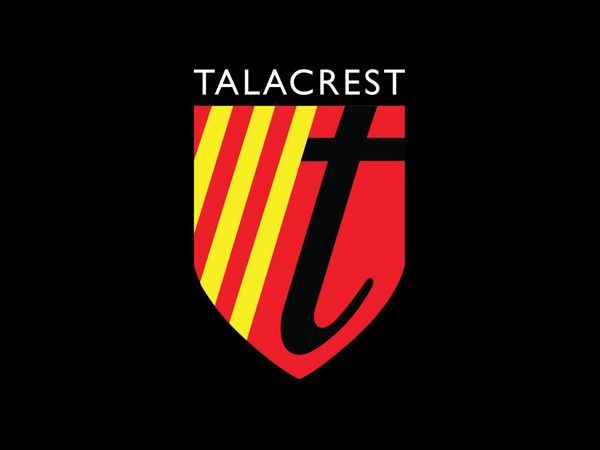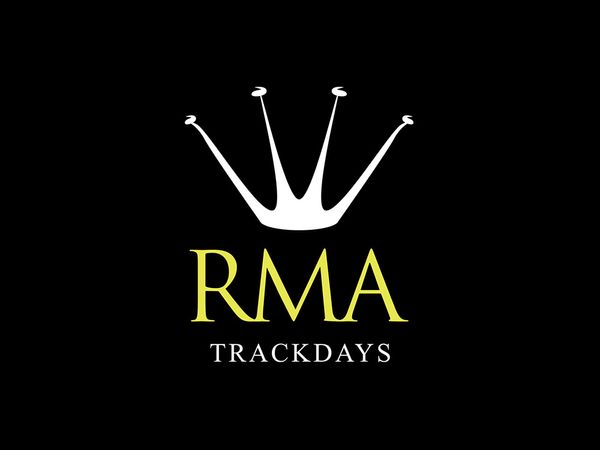Lot S237 // Saturday, January 18th// Kissimmee 2025 - Steve McQueen’s Hero Car from “Le Mans,” Chassis No. 917-022
1969 Porsche 917K Race Car
4494cc 180-Degree V-12
4-Speed Manual
EXTERIOR COLOR Gulf Blue/Orange
INTERIOR COLOR Black/Red
OWNERSHIP HISTORY
Steve McQueen/Solar Productions, 1970-1971
Reinhold Joest, 1971-1975
Brian Redman, 1975-1977
Richard Attwood, 1977-2000
Frank Gallogly, 2000-2001
Jerry Seinfeld, 2001-Present
HIGHLIGHTS
Chassis No. 917-022
One of the most recognizable race cars of all time
Purchased new in 1970 directly from the Porsche factory by Steve McQueen and Solar Productions
Used extensively in the filming of the iconic 1971 film “Le Mans”
The hero car driven by McQueen during race sequences in the film
917-022 was specially prepared and altered for film production in many ways, including the addition of camera mounts and brackets
Original camera mounting locations are still intact
Restoration by Cavaglieri Restorations of Van Nuys, California, completed in August 2024
Restored to its 1970 specifications as seen in the 1971 movie “Le Mans” and as driven by Steve McQueen, while also refreshing its mechanical components
The entire car was repainted and new graphics were installed during the restoration to correctly match the Blue and Orange Gulf Oil No. 20 livery seen in the movie “Le Mans”
Following filming, 917-022 was purchased by Reinhold Joest of Team Auto Usdau and campaigned during the 1971 race season by drivers Willi Kauhsen, Joest, Angel Monguzzi and Jo Siffert
In 1975, 917-022 was acquired by Porsche factory driver Brian Redman
Redman sold 917-022 to his friend and Le Mans-winning Porsche 917K driver Richard Attwood in 1977
Attwood refinished 917-022 in a red and white livery resembling the 1970 Salzburg 917K in which he secured Porsche’s first overall victory at the 24 Hours of Le Mans
917-022 was campaigned sporadically by Attwood in European historic racing events throughout his ownership
In late 1999, Attwood decided to offer 917-022 for sale and returned it to the Blue and Orange Gulf Oil livery made famous in “Le Mans”
917-022 was sold at the Monterey auctions in August 2000 and purchased by renowned historic Porsche collector Frank Gallogly
Comedian and Porsche enthusiast Jerry Seinfeld acquired 917-022 from Gallogly in 2001 and has maintained possession of the car in his renowned collection ever since
Sold on a Bill of Sale
THE STORY
There are cars, and then there are legends. Vehicles that draft into the zeitgeist to define an era, going on to be lusted after, talked about, and revered for decades to come.
It’s a nearly impossible task, but one that the 1969 Porsche 917K Chassis No. 917-022 has effortlessly accomplished, capturing lightning in a bottle to become an enduring icon in both motorsport lore and pop culture.
The stars aligned, cementing its status as one of the most recognizable race cars of all time.
A Star is Born: McQueen's Acquisition
From the outset, this Porsche 917 was destined for greatness. After leaving the factory in West Germany in 1970, it was purchased by Hollywood’s high-octane rebel, Steve McQueen, through his Solar Productions company.
McQueen, an avid motorsports enthusiast, had just finished second at the 12 Hours of Sebring in March 1970, driving a Solar Productions Porsche 908/2 alongside Peter Revson. Fueled by this success, McQueen set his sights on not only producing a film about the world’s greatest endurance race, the 24 Hours of Le Mans, but also competing in the event himself. His ambitious plan was to drive a Porsche 917K, with none other than Sir Jackie Stewart as his co-driver.
However, the dream of racing at Le Mans came to an abrupt halt when Cinema Center Films, a production company involved in the making of “Le Mans,” forbade McQueen from participating. Their concerns over the financial risks—if McQueen were to be injured or worse—ultimately outweighed his passion to compete.
A Drive in the Country at 200 MPH: Filming “Le Mans”
Undeterred, McQueen shifted focus to telling the story of the storied race on screen. The newly acquired Porsche 917 was shipped to northwest France, ready for its starring role in “Le Mans” (1971), now regarded as one of the most authentic and raw depictions of motorsport ever captured.
The production itself was as grueling as the races it sought to recreate. Filming began during the real 38th running of the 24 Hours of Le Mans in June 1970 and stretched on for months. In front of 50,000 spectators, 19 cameras, operated by a 45-member crew, were placed around the track to record the high-octane action.
But the true technical innovation came from McQueen's team. They entered a Porsche 908 equipped with front- and rear-mounted cameras into the actual race to film alongside the competitors. The car not only finished 8th, but it also captured more than 70,000 feet of footage, offering viewers unprecedented views and perspectives of the race.
The Heart of the Story: McQueen's Pursuit of Authenticity
To ensure complete authenticity, McQueen enlisted a team of 221, including top drivers and 45 cameramen. After the race, Andrew Ferguson, a British racing team manager, set up a specialized racing department to organize filming, hiring 56 professional drivers and sourcing 25 of the world’s fastest cars, including four Porsche 917s, Ferrari 512s and more. This commitment to realism defined “Le Mans.”
At the center of the production was Porsche 917-022 with its aerodynamic design and iconic Gulf Oil blue-and-orange livery. As the hero car driven by McQueen’s character, Michael Delaney, it became a symbol of the film's high-speed drama.
McQueen himself performed stunt driving in 917-022, a car specially outfitted for production. For these sequences, crews attached camera brackets to the car’s framework, enabling intense in-car shots of McQueen and his co-drivers at speed. Remarkably, those mounting points remain intact today, a lasting testament to the car’s role in capturing some of the film’s most thrilling moments.
In “Le Mans,” McQueen begins the race in 917-022, bearing the famous Gulf Oil No. 20 livery. Although his character crashes out of the race, the real car survived. Cleverly, the filmmakers used Lola T70 chassis disguised with Porsche bodywork for crash scenes, preserving 917-022 for later use. Some claim the car was repainted as No. 21 in certain scenes, but there’s no doubt about its starring role on screen.
Opposite McQueen’s Porsche 917, German actor Siegfried Rauch played Delaney’s Ferrari-driving rival, while Elga Anderson provided strong support. However, “Le Mans” wasn’t a typical Hollywood film. Critics noted its documentary-like feel, praising its raw, unfiltered focus on actual wheel-to-wheel racing—giving the movie a visceral realism that remains impactful today.
Special effects were overseen by Sass Bedig, famous for orchestrating the iconic chase scene in “Bullitt” involving McQueen behind the wheel of a 1968 Mustang, outrunning henchmen in a sinister black Dodge Charger. As in “Bullitt,” where McQueen did his own stunts, his dedication to authenticity in “Le Mans” solidified his place as both a serious actor and a true gearhead.
Success on the Circuit: Racing History Post-Le Mans
After filming for “Le Mans” wrapped, Porsche 917-022 embarked on its own storied journey, transitioning from movie star to full-fledged race car once again. In 1971, it was purchased by Reinhold Joest, an accomplished driver and future racing legend who got his start winning hillclimb races in the German mountains. Joest, who would later win the 24 Hours of Daytona, the 6 Hours of Nürburgring (twice) and guide his team, Joest Racing, to an astounding 15 victories at Le Mans, campaigned 917-022 with Team Auto Usdau Racing.
Alongside Porsche factory driver Willi Kauhsen, Angel Monguzzi and Jo Siffert, Joest enjoyed great success during the 1971 World Manufacturers Championship season, further cementing the legacy of 917-022 on the track.
In January 1975, Porsche 917-022 was acquired by Porsche factory driver, seasoned endurance competitor and race Hall of Famer Brian Redman. Notably, Redman had raced in the 1970 24 Hours of Le Mans in a Porsche 917K that bore the same blue-and-orange Gulf Oil No. 20 livery as the 917-022 seen in McQueen’s film.
Three years later, Redman passed 917-022 along to his friend and fellow Porsche driver and World Championship Grands Prix veteran, Richard Attwood. Attwood, who had piloted a Porsche 917K to victory in the 1970 Le Mans race, campaigned 917-022 in various European historic racing events. At one point during his ownership, Attwood chose to refinish the car in a striking red-and-white livery, echoing the Salzburg 917K he and Hans Herrmann drove to Porsche’s first overall win at Le Mans in 1970.
Attwood held onto 917-022 for over two decades before deciding to part with it in 1999. Prior to the sale, he had the car restored to its iconic blue-and-orange Gulf Oil livery, paying tribute to its starring role in “Le Mans.” The car was purchased by renowned Porsche collector Frank Gallogly, who, in 2001, passed it on to comedian, television star and passionate Porsche enthusiast Jerry Seinfeld.
The Legend Lives On: The Restoration of 917-022
Since joining Jerry Seinfeld's impressive collection, 917-022 has become a prominent fixture at prestigious automotive events, including the Monterey Historic Automobile Races, the Pebble Beach Concours d’Elegance in 2009 and again in 2021, and the Porsche Rennsport Reunion V in 2015.
Today, Porsche 917-022 is more breathtaking than ever, thanks to a comprehensive overhaul by Cavaglieri Restorations in Van Nuys, California. The primary goal was to return the car to its original screen-used specifications while revitalizing its mechanical components. Experts from Ed Pink Racing Engines in Van Nuys handled the engine rebuild, while John Bunin and Adrian Gang brought their specialized expertise to the transmission, bringing the car’s powertrain back to its peak performance.
As part of the effort, a new fuel cell was custom fabricated to match the original unit. During the project, the 917K's frame was pressure-tested for cracks and leaks, with repairs made as necessary. Both the 4-wheel hydraulic ventilated disc brakes and the 4-wheel independent suspension underwent magnafluxing and refurbishment.
Completed in August 2024, this meticulous transformation included a repaint of the entire car, even returning the frame to its original black finish. The iconic blue-and-orange Gulf Oil No. 20 livery from “Le Mans,” right down to the expertly installed new graphics, was meticulously and correctly matched to its grand on-screen appearance.
Precision Engineering Meets Racing Dominance
The immense appeal of 917-022 extends well beyond the cinematic spotlight. The model was a terrific competitor, first appearing in the 1969 season and securing victory at the 1970 24 Hours of Le Mans with a red-and-white example with No. 23 livery driven by Richard Attwood and Herrmann taking top honors. Another victory was secured at Le Mans in 1971 with a blue and white 917 being driven to first place by Helmut Marko and Gijs van Lennep.
Chassis No. 917-022 is powered by its original, matching-numbers Type 912 4494cc DOHC air-cooled 180-degree V-12 engine, paired with a 4-speed all-synchromesh manual transaxle. This powerhouse setup includes Bosch mechanical fuel injection, with an 88mm bore and 66mm stroke, and a 10.5:1 compression ratio. The result is an impressive output of 580 BHP at 8,400 RPM and 366 lb-ft of torque at 6,800 RPM, making the Type 912 engine a formidable force both on the track and in the annals of motorsport history.
Worldwide Appeal: An Auction for the Ages
There are unforgettable movie cars, heart-pounding race competitors, and timeless classics owned by beloved celebrity figures. Yet, it’s a rare rolling gem that manages to infuse all these alluring elements into one stunning package.
Porsche 917-022 is that exceptional car, seamlessly blending cinematic history with genuine motorsport pedigree. From its iconic role on the silver screen to its real-world racetrack performance, it is a remarkable piece of automotive artistry, forever linked to those pop-culture legends, Steve McQueen and Jerry Seinfeld.
But it’s not time to roll credits or drop a checkered flag, as its story isn’t over. The one-of-a-kind, star-studded 917-022 is set to cross the auction block at Mecum's 2025 Kissimmee auction, The World's Largest Collector Car Auction®.
As it takes center stage under the Florida sun, the world will be watching as this spectacular vehicle shatters records and secures its legacy as one of the most sought-after treasures in automotive history.





















